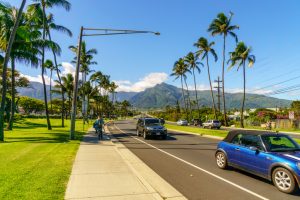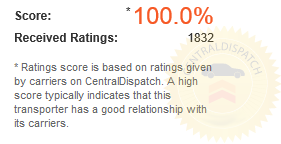Motorcycle and moped licenses
Other types of licenses
Conclusion

Motorcycle and moped licenses
The first two classes of licenses that you can get in Hawaii are for mopeds and motorcycles. Mopeds are covered under a Class 1 license in Hawaii while motorcycles are covered under a Class 2 license. Both licenses cover two or three wheeled vehicles. The big difference between the two classes of licenses is that the Class 1 license specifies maximum horsepower and speed. This is why a motorcycle license is a completely different class of license in Hawaii.
Specifically, a Class 1 license (or moped license) allows for a maximum horsepower of two and a maximum speed of 30 miles per hour. Moped licenses also specify that the vehicle must have a max capacity of one rider whereas motorcycle licenses or Class 2 licenses in Hawaii do not.
Other types of licenses
Other types of licenses in Hawaii will include any license required for driving a vehicle that is not a moped or motorcycle. This will also include commercial driver’s licenses which are required in order to be able to legally operate any commercial vehicles such as box trucks, semi-trucks, cargo vans, busses and more.
The following are the other types of licenses required to operate specific vehicles in Hawaii:
- Class 3 – This type of license is a regular driver’s license required or driving a standard passenger car. These licenses specify that the vehicle must be less than eighteen thousand pounds and that they can hold no more than 15 passengers.
- Class 4 – These licenses are for vehicles that weigh up to 26 thousand pounds. They almost exclusively cover RVs or RV-type trailers such as fifth wheelers.
- Class A CDL – If the vehicle you plan on driving exceeds 26 thousand pounds and the towed portion of the vehicle weighs 10 thousand pounds or more, then you will need a Class A Commercial Driver’s License. The vehicles that are typically within the weight and specification range for this license are flatbed trucks, 18-wheelers, tankers and more.
- Class B CDL – This license will permit you to operate a vehicle over 26 thousand pounds where the towed portion of the vehicle is less than 10 thousand pounds. Vehicles that you need this license to operate include large busses (such as segmented busses or double-deckers) and straight trucks. This license also allows you to operate a Class C CDL vehicle but not any Class A CDL vehicles.
- Class C CDL – A Class C CDL will allow someone to operate a vehicle that can transport 16 or more occupants or a vehicle that is transporting hazardous materials (with the right endorsement).
- Instruction Permit – An instruction permit will simply allow an unlicensed driver to practice driving safely under several specific conditions. These conditions are that the driver must be at least fifteen and a half years old, the driver must be accompanied by a fully licensed driver 21 years old or older, a parent/guardian must be present if the permit holder is driving between 11PM and 5AM, and they cannot have more than one other individual in the car with them under the age of 18.
Conclusion
Getting your driver’s license in Hawaii is obviously required by law prior to operating any type of vehicle on a public roadway. However, each different type of license that you can get will only cover specific types of vehicles. For example, Class 1 and 2 licenses in Hawaii only allow the operation of mopeds and motorcycles respectively. For much larger vehicles like Busses and 18-wheelers, you will be required to have a commercial driver’s license.


